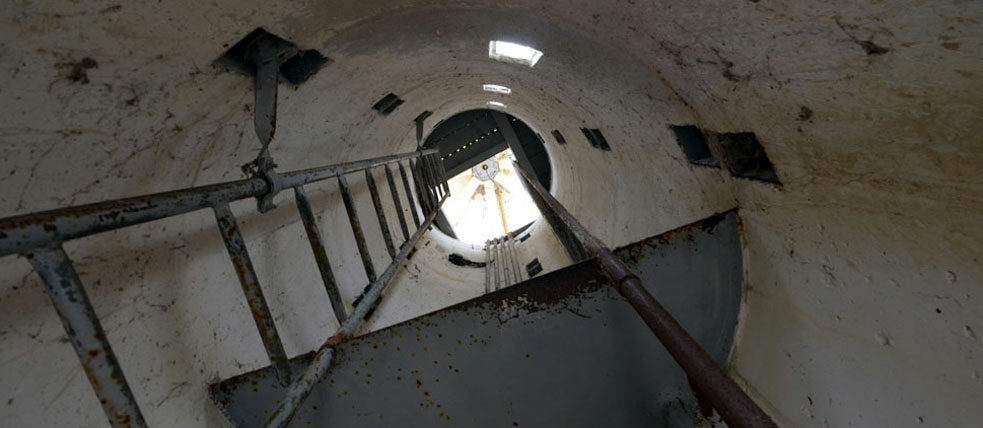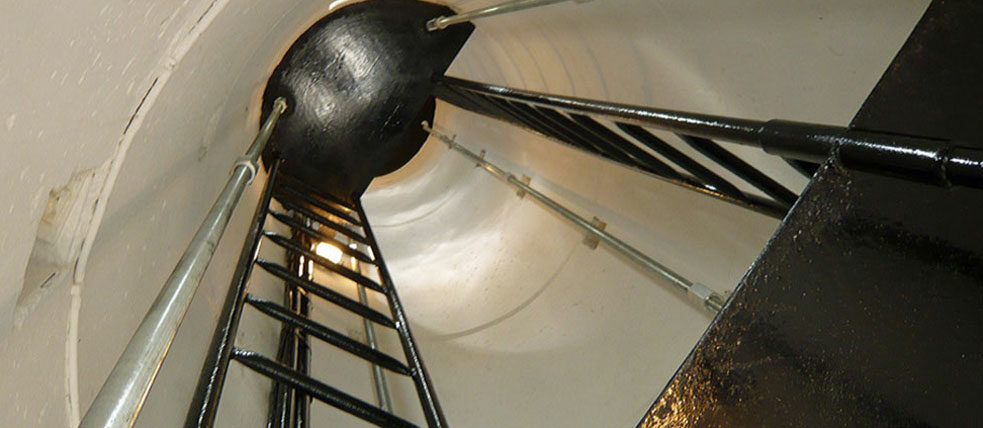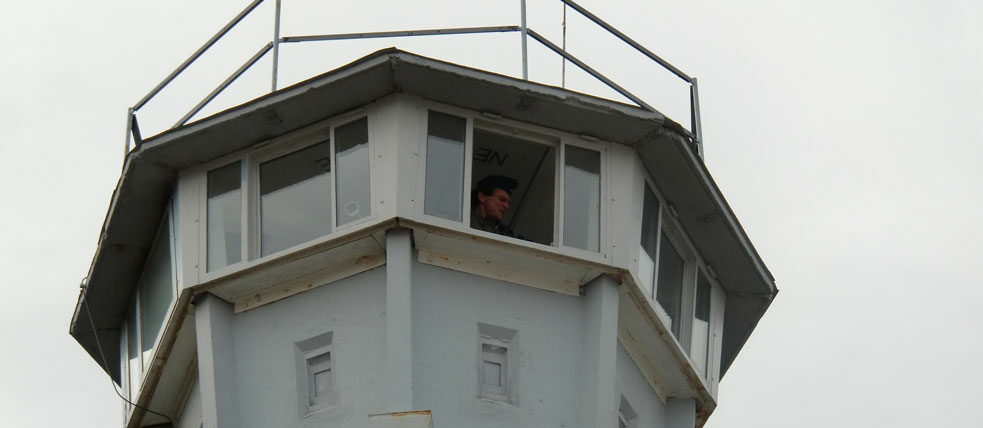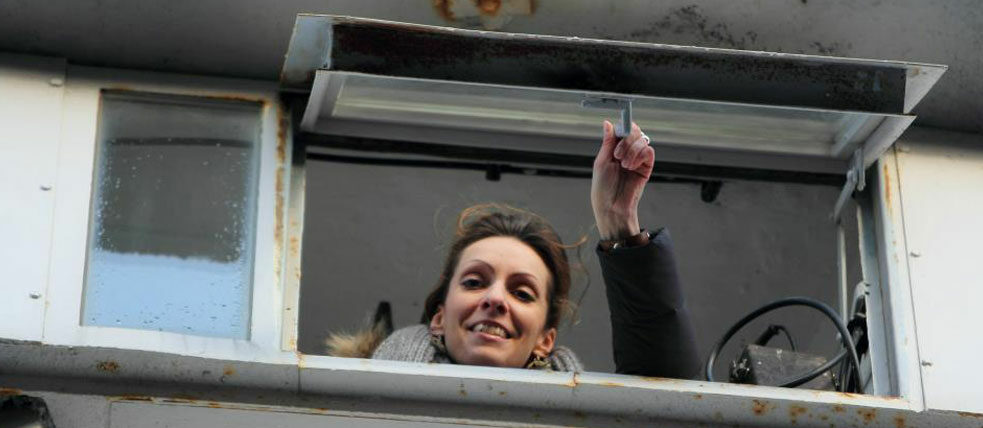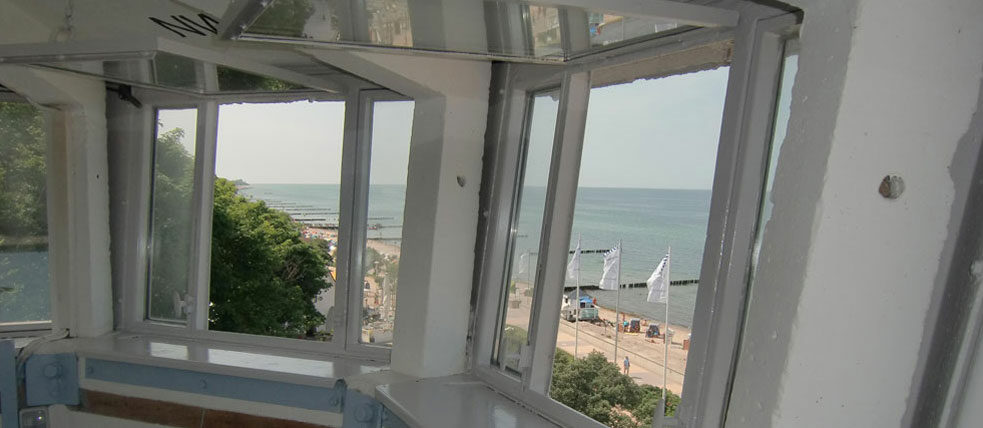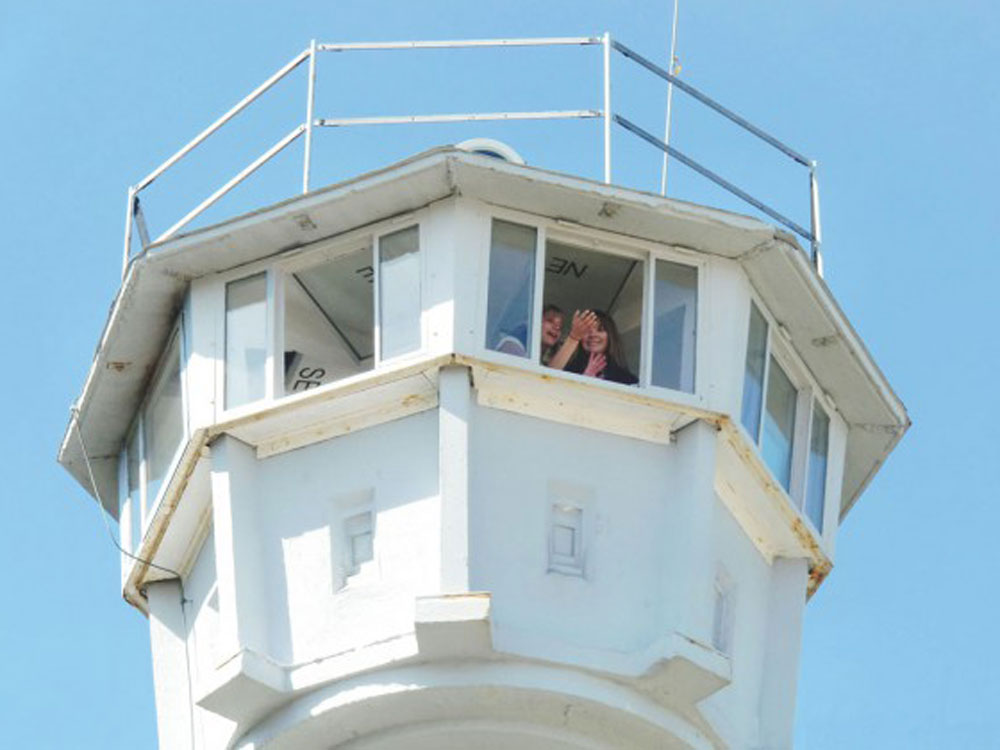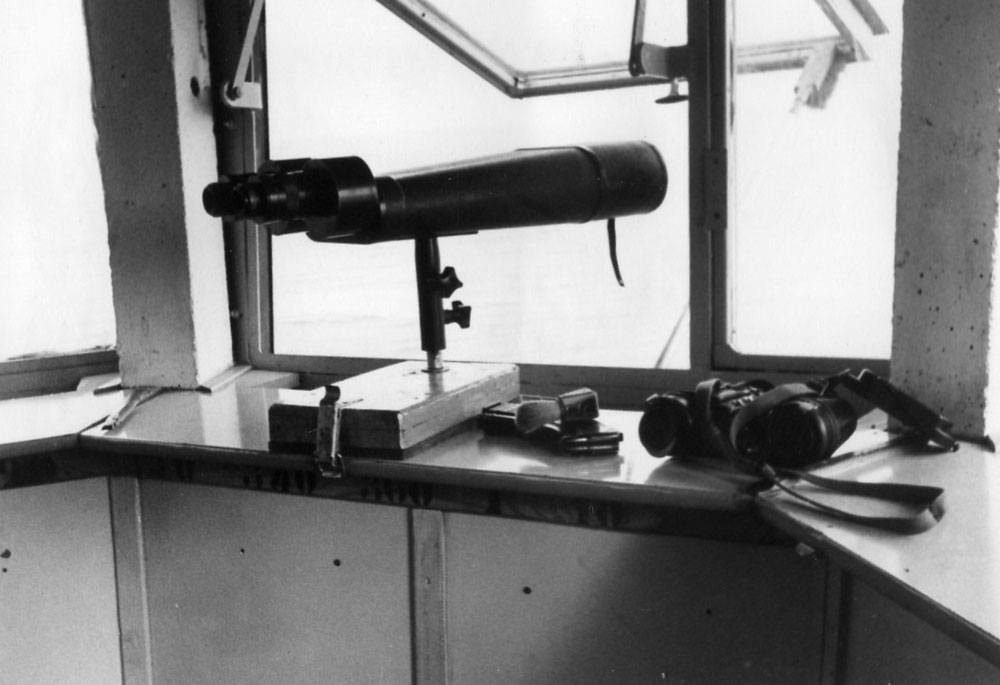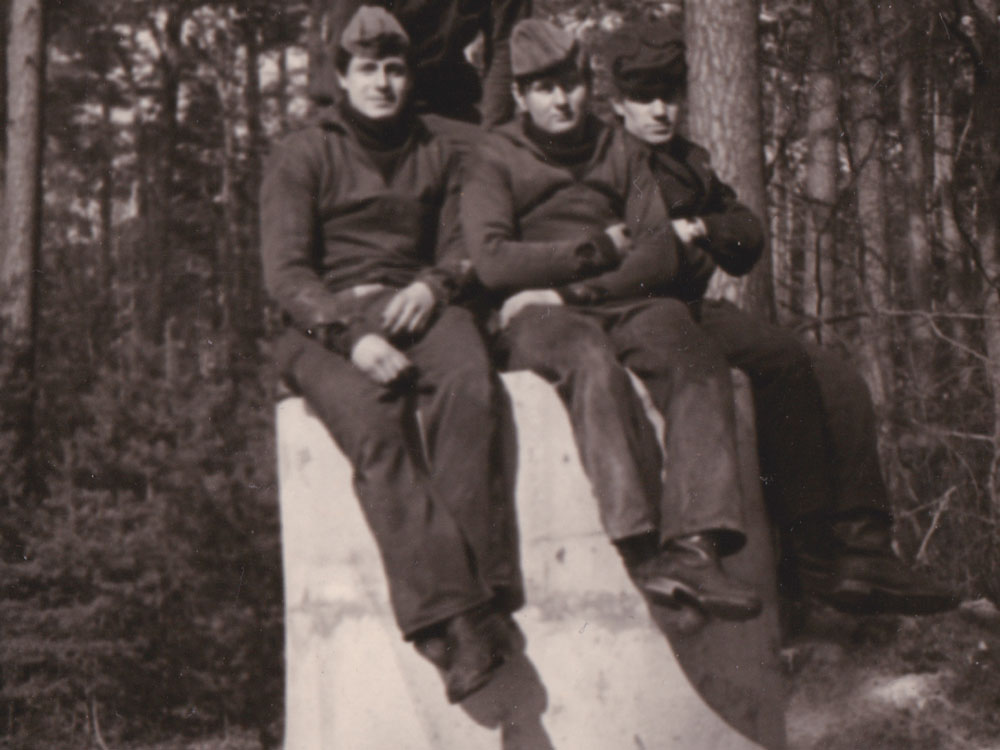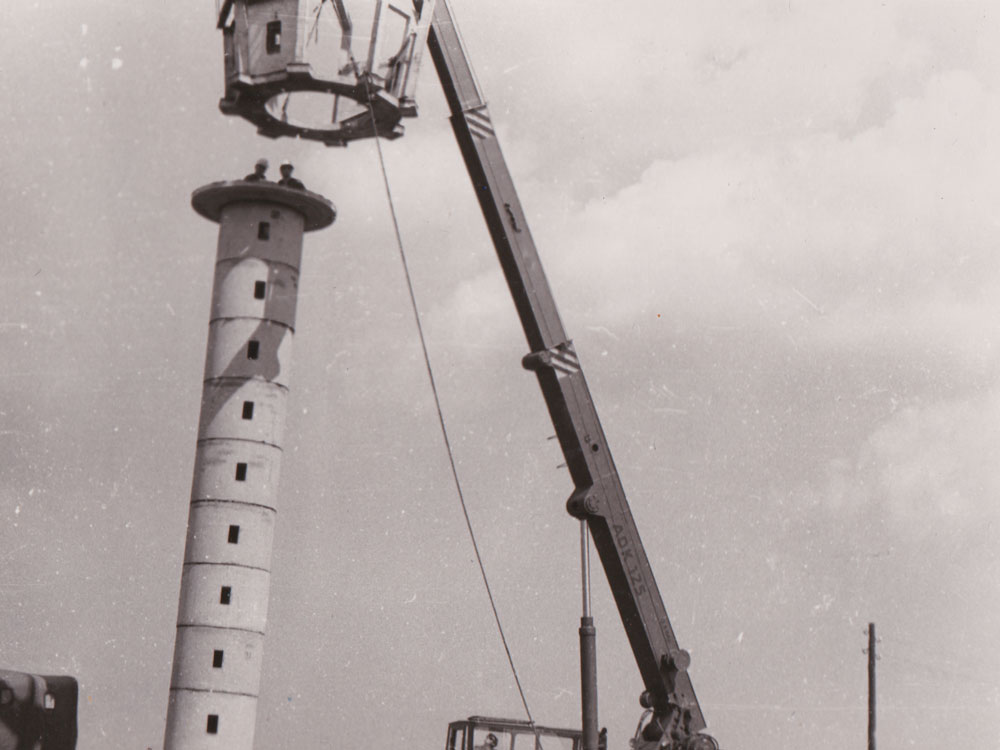Border tower
In 1973 the Border Watchtower “BT11” was erected at its present place. From the 50 ft high lookout the border guards could search a 12 sea miles wide area. 27 towers of this type stood along the seaborder of the German Democratic Republic (GDR) Only two of its kind were saved from demolition. The baltic border tower ist he only one accessible for the public.

Climbing to the top
Over staggered steel ladders, one can climb up to the lookout which allows a 360° panoramic view over sea and coast. Semi-circle wooden platforms below each ladder provide safety from falling.
Daily tower routine
Der Tower was manned with two soldiers. Working hours were 6 to 12 hours. Every movement which seemed suspicious was recorded. With the telescope the water was constantly searched for conspicuous objects. By means of the transmitter facilities which were incorporated into the “Border Notification Network” border patrol boats or army helicopters could be immediately informed. At night the beam of the searchlight from the roof skimmed across the beach or was pointed at suspicious objects. In addition to that a 16 kW high-powered floodlight was moved onto the beach promenade and its strong beams skimmed beach and sea regularly.
Construction / Technical details
A special unit of the Border Brigade Coast was resbonsible for the construction of all border towers along the baltic border.
The Tower consists of a concrete foundation, 11 premanufactured concrete rings that were stacked on each other and the pulpit. Inlaying steelbars were welded together to connect the ring units. The pulpit with ist 360° panorama windows was mounted on top by use of a crane. BT11 refers to the number of concrete rings used.
The Interior equipment contained emergency power supply, 8 lockable embrasures, fire extinguisher, a strong telescope, firmly mounted on a tripod, and binoculars, radio transmitting facilities, aerial desk with maps, clock, heater, searchlight, machine gun.



